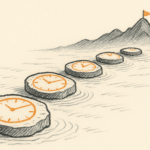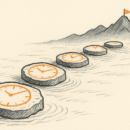Kenya’s economy in 2007 – for dummies
This column is happy to continue its annual tradition of deciphering the weighty and comprehensive Economic Survey – our main compendium of economic numbers – for readers’ benefit. So, if you don’t have the money (Sh. 900), the time (284 pages) or the interest (what’s on TV?) to read the whole thing yourselves, today’s piece is for you.
You all know the headline news: 6.1 per cent growth in GDP in 2006! Not even the most negative of naysayers can now deny that the economy is on a growth path (we were doing less than 1 per cent in 2002). Let us also accept that economies, like large ships, take some time to turn around. Ours is turning.
The ‘economy’ is still dominated by agriculture (a quarter of what we produce) and three other sectors that contribute around a tenth each – wholesale and retail trade, manufacturing, and transport and communications. That’s more than half of everything we produce. So we’re still a nation of mboga-growers, duka-wallas, matatu-hoppers, and chuma-beaters. And increasingly, text-messengers. We do some other things as well, but these loom large in the reckoning.
So what’s growing? The large agricultural sector had a relatively quiet year (it was a time of drought) but others more than took up the slack. Purchasing power is clearly growing in the economy, and it shows in consumption. Hotels and restaurants put bums on seats and bodies in beds. Those who manufacture food, beverages and tobacco rejoiced as more output left their factories. The tills were also ringing in the shops, as the trade sector clocked double-digit growth – this from a sector that was actually shrinking a few years ago. And we have now sold 7.3 million mobile connections to date (a third more than there were just a year earlier).
Commentators have noted that this is a demand-side boom: the contribution of the trade sector to growth, for example, doubled from 8.7 per cent in 2005 to 16.1 per cent in 2006 – the largest increase shown by any sector. This is reflected in our booming supermarkets: Nakumatt, the largest chain, recently reported a 150 per cent increase in turnover.
All of this is evidence of the latent demand that is gradually being unlocked in the economy. If growth can feed more purchasing power down to the emerging classes, we have the very real possibility of a sustained consumption boom in this country – not just in groceries, but in real estate, vehicles and everything else that an emerging middle class buys.
How are we doing out there in the wider world? Not so well. Our trade balance worsened by nearly 50 per cent, as we continued to import far more than we export by value. This is partly due to the high international price of oil in recent years; but also because the high exchange rate regime is hurting exports, particularly the two things we export most of: tea and horticultural produce.
Where does our stuff go? To Africa and Western Europe, mainly (more than 70 per cent). Asia, on the other hand, accounts for just 16 per cent of our exports – but for more than half of our imports. That is a telling statistic: We need the Asians’ products (fuel, vehicles, machinery and industrial supplies) far more than they need ours.
Therein lies a truth: the dramatic, sustained economic transformations enjoyed by so many Asian countries require much more than a domestic market, booming or not. Our 36 million people, only 1.86 million of whom are in modern wage employment, cannot take us to the promised land. We have to think ‘region and globe’ if we are to grow our way out of poverty, and for that the supply side of our economy takes centre-stage. To sell things to the world, we have to produce more of the things the world wants, at world-class quality and world-beating prices.
Alongside this 6.1 per cent growth sit some uncomfortable truths. Our roads crumble months after they are built, and we bask in complacency and do nothing about it (you know why). We have yet to get proper broadband internet links in this country. We appear to have completely lost the plot on security, as any look at recent (internationally reported) headlines will tell you. And when it comes to corruption, all we are able to do is serve from the lip rather than shoot from the hip.
All of that affects our international competitiveness, which is still woeful. So if we want to look beyond recoveries and boomlets and towards transformations, we must be willing to take some very hard decisions on infrastructure, security and corruption – decisions we shirk, year after year, government after government.
That’s the big picture; this column will continue to delve into more of the economy’s numbers in the weeks to come. In the meantime, enjoy this: the Economic Survey never fails to deliver a classic typo every year, and this year had a gem: “Reported cases of MORALITY increased by 11.6 per cent…”
May morality increase wherever you are this Sunday!

Buy Sunny Bindra's new book
The X in CX
here »
Popular Posts
- Where are you rushing to—your funeral?June 29, 2025
- The map will appear—once you start walking.July 6, 2025
- Built the app, forgot the flowJune 22, 2025
- How to spot a real thinkerJune 15, 2025











